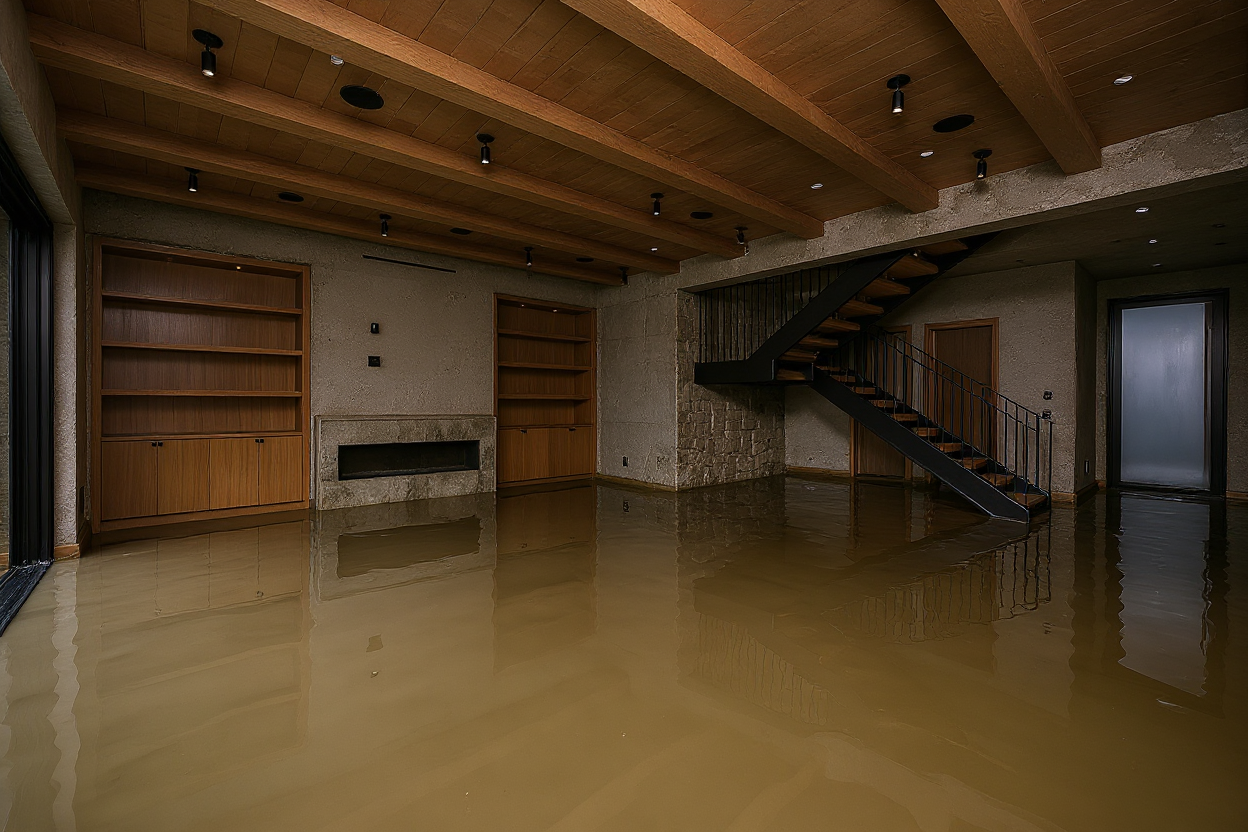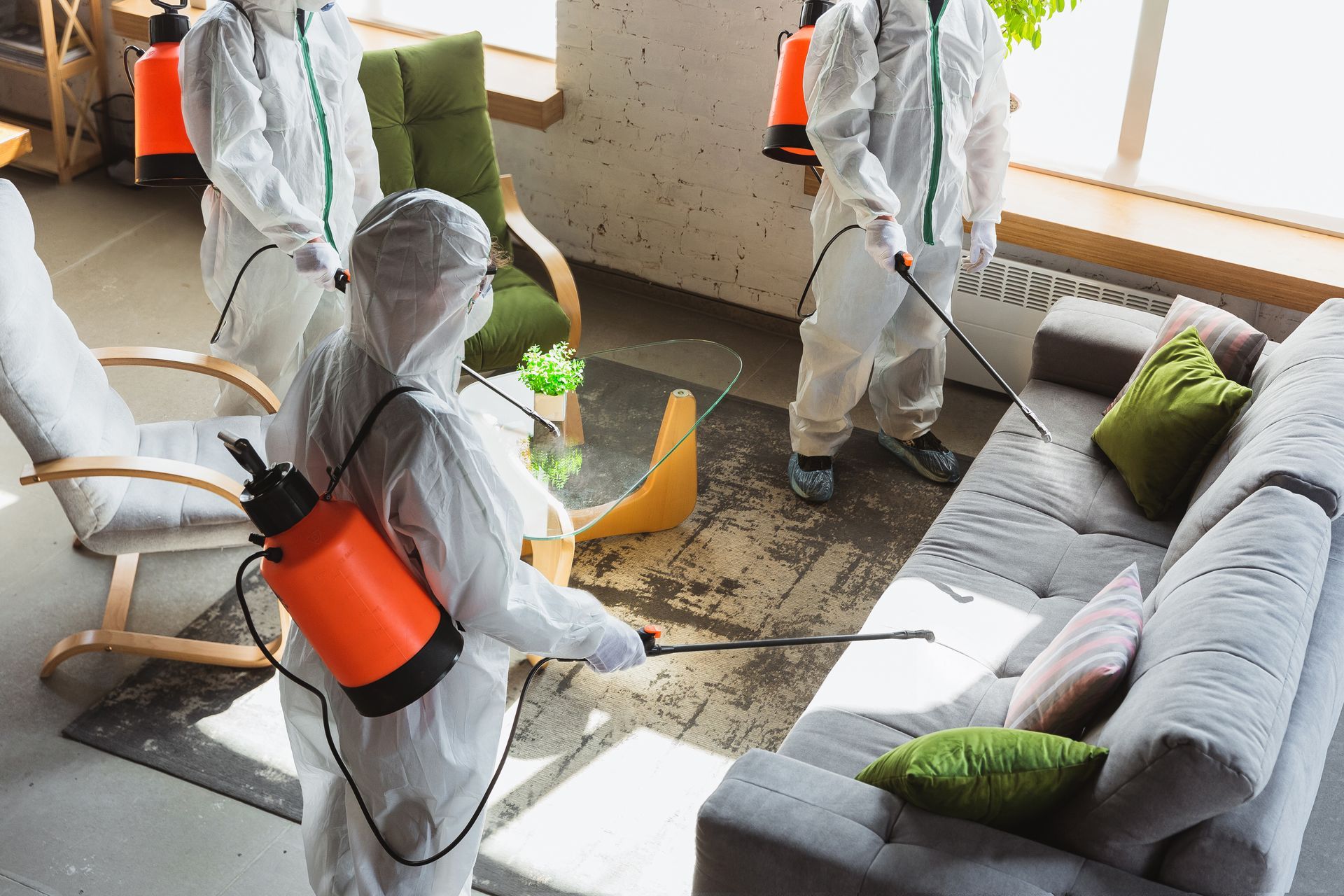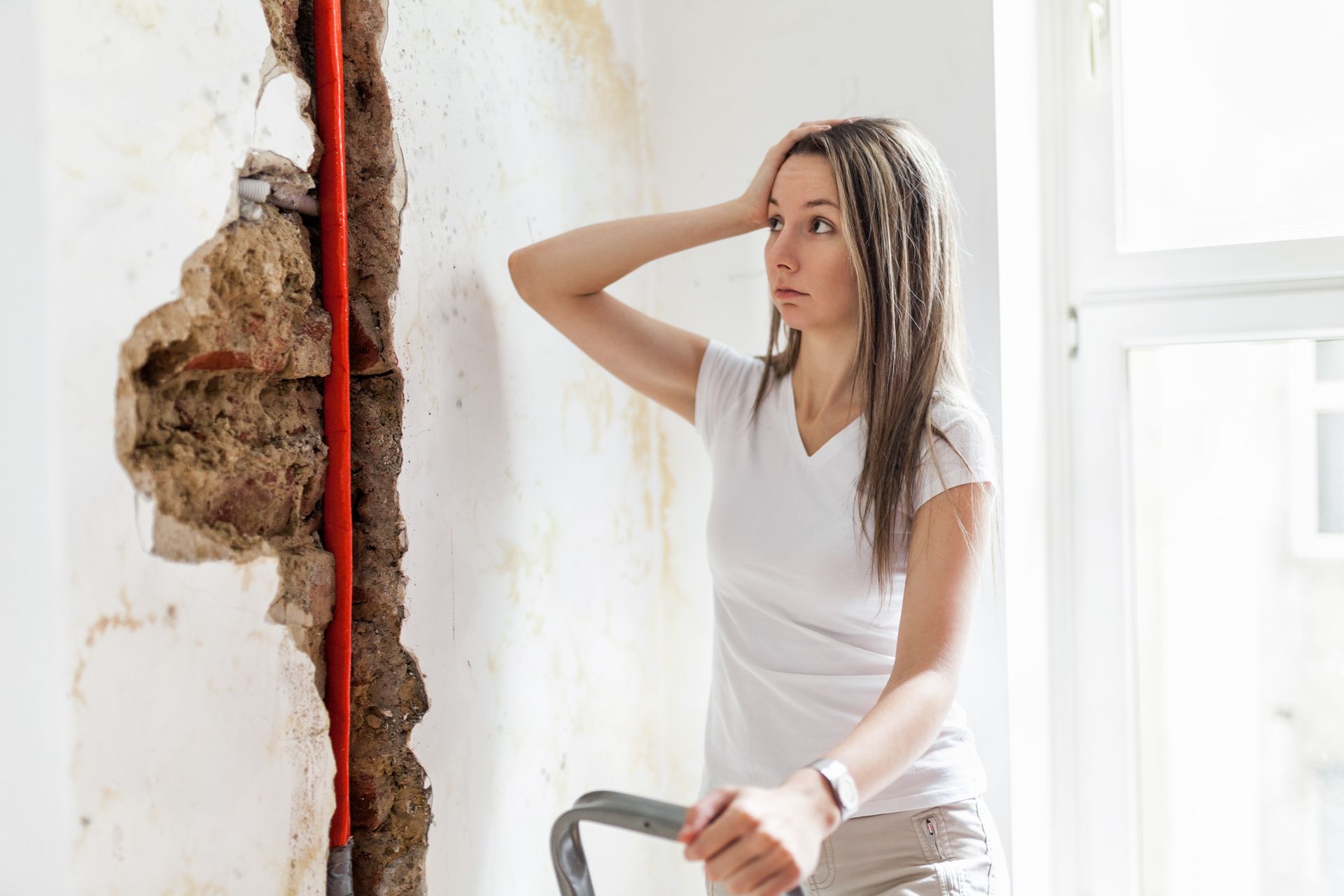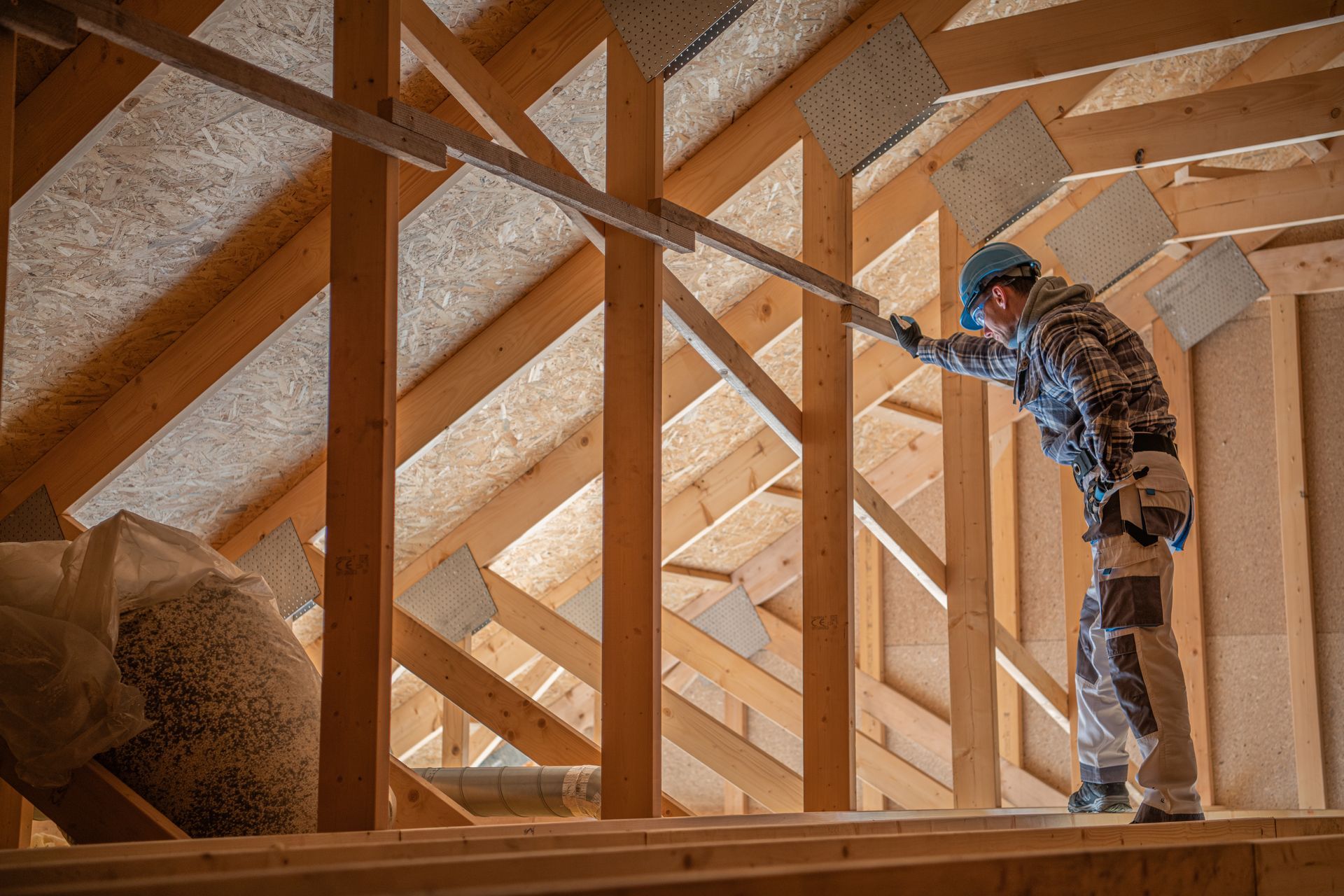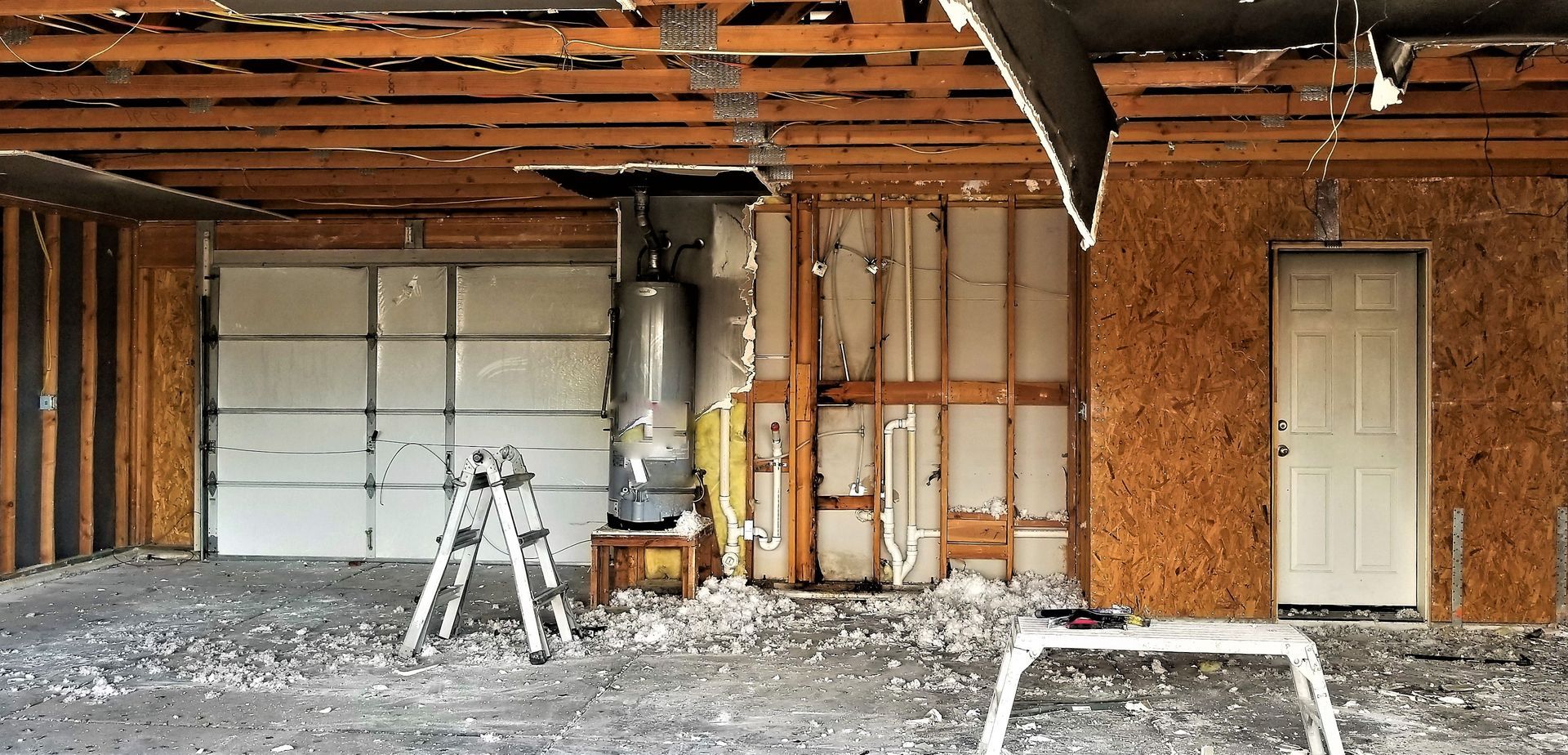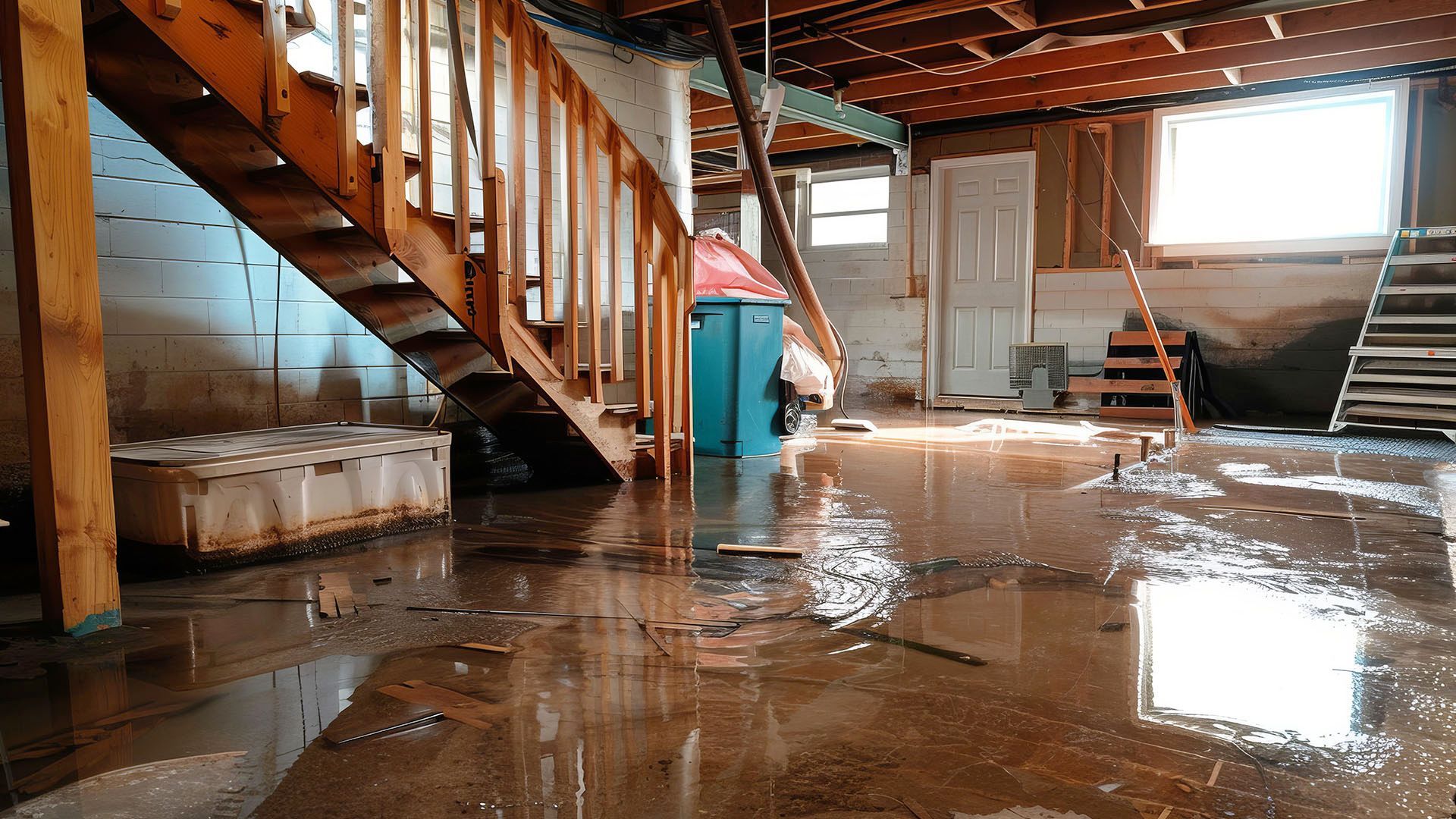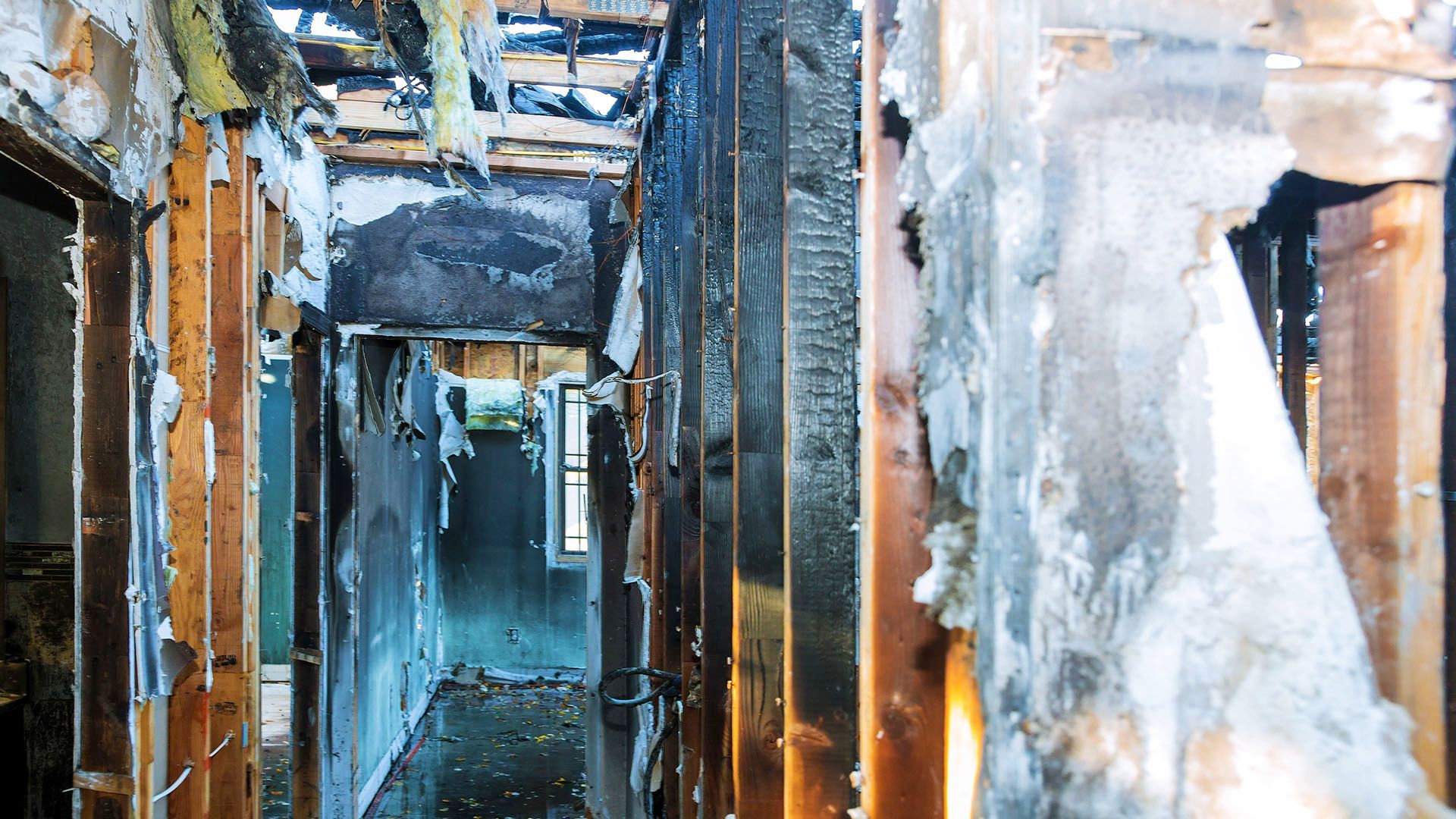Smoke Odor Removal in CT: Methods, Timelines, and Insurance Tips
When a fire happens, the flames may go out fast, but the smoke smell can stick around for weeks or even months. At Incredible Restorations, LLC, our IICRC-certified team has been helping Connecticut homeowners recover from fire and smoke damage since 2017. We're a local, family-owned company based in Newington, CT, providing 24/7 emergency service and working directly with your insurance company to make the process smoother and more transparent. Our technicians handle water, fire, and smoke damage every day, so this guide is based on real jobs in CT homes not theory.
If you’re dealing with smoke odor right now, here are the big points up front:
- Act quickly so the odor and residues don’t soak in deeper.
- Simply “airing out” or spraying deodorizer is rarely enough.
- In many cases, your homeowners insurance will help pay for
smoke odor removal in CT when it’s related to a covered fire.
Below is a clear, step-by-step look at why smoke odor lingers, how professionals remove it, how long it usually takes, and what you should know about insurance.
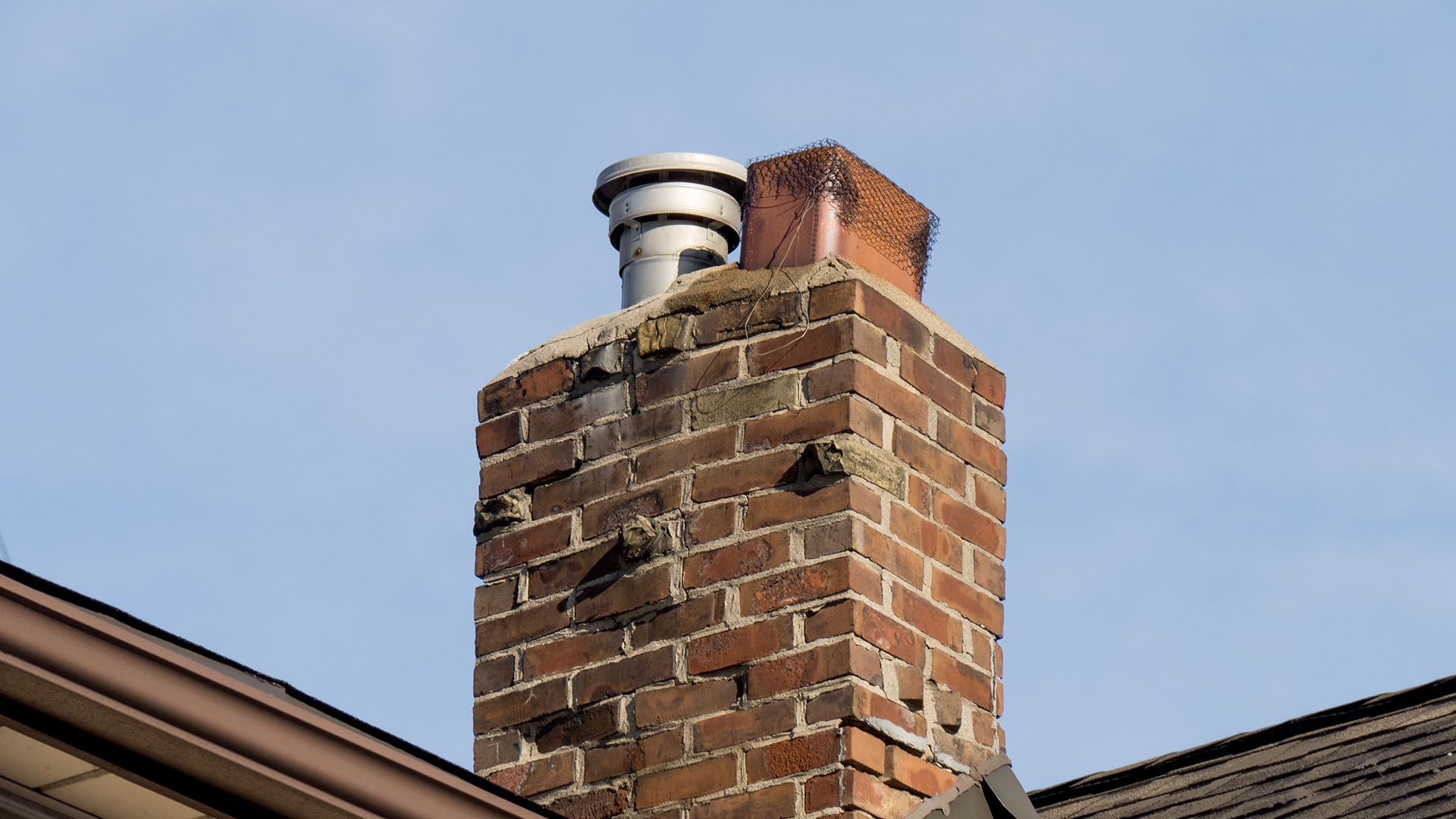
Why Smoke Odor Persists After a Fire
How smoke travels and penetrates materials
Smoke is made of tiny particles, gases, and soot. During a fire, hot air pushes this smoke through your home. It can:
- Travel through hallways, stairwells, and tiny gaps.
- Get pulled into HVAC and duct systems.
- Settle deep into porous materials like drywall, wood, carpets, and furniture.
Even a “small” fire in one room can send smoke odor into areas that never burned. That’s why fire and smoke odor remediation in Connecticut usually involves the entire property, not just the obvious damage.
Types of smoke residues and their impact on odor removal
Not all smoke is the same, and the type affects how hard it is to clean:
- Dry smoke (high heat, fast-burning fires): Leaves a fine, powdery soot. Easier to vacuum and wipe, but it spreads everywhere.
- Wet smoke (smoldering, low-heat fires): Thick, sticky, and greasy. It clings to walls, ceilings, and contents and produces a strong, lingering smell.
- Protein smoke (kitchen and cooking fires): Often nearly invisible, but leaves a strong, sharp odor and a thin, hard-to-see film on surfaces.
- Fuel-oil or furnace puff-backs: Can coat large areas with oily soot that’s tough to remove.
Each type needs different cleaning methods. Using the wrong technique can smear residues, push them deeper, or make the smell worse, this is why professional smoke residue cleanup CT services are so important.
Common challenges in Connecticut homes (climate, infrastructure, materials)
Connecticut homes face a few extra hurdles:
- Humidity: Moist air can react with soot and make odors stronger and more stubborn.
- Older housing stock: Plaster, wood trim, and older insulation can all absorb and hold smoke.
- Basements and attics: These spaces often trap smoke and are easy to forget during cleanup.
- Oil heat and forced-air systems: These can spread smoke and soot throughout the house, especially if the system runs during or after a fire.
Because of these factors, smoke damage restoration Connecticut projects must look at the whole building, not just the main living areas.
Proven Methods for Removing Smoke Odor
Assessment and containment: what to do first
Before any deep cleaning starts, a professional team will:
- Inspect the home to locate all smoke-affected areas, including hidden spaces.
- Protect unaffected rooms by sealing doorways and using negative-air machines so soot doesn’t spread.
- Set up air filtration with HEPA air scrubbers to pull particles out of the air.
For homeowners, the best first steps are:
- Do not wipe walls or fabrics with random cleaners, you can set stains.
- Do not run your HVAC system until it’s inspected.
- Open windows only if it’s safe and weather allows, but don’t rely on this alone.
This early containment is a key part of smoke odor neutralization services CT professionals offer. Learn more about what to do after fire damage.
Cleaning and deodorizing hard and soft surfaces
Next comes detailed residential smoke odor cleanup CT homes need after a fire:
- Hard surfaces: Walls, ceilings, cabinets, and floors are cleaned with the right combination of dry sponges, HEPA vacuuming, and specialized cleaning agents.
- Soft contents: Carpets, rugs, upholstery, drapes, and bedding may be cleaned on-site or removed for professional laundering.
- Personal items: Clothing, linens, and some possessions can often be restored with specialized wash systems and deodorizing methods.
The goal of fire smell elimination CT homes is not to cover up the smell, but to remove the soot and particles causing it. Deodorizing products are used after a thorough cleaning, not instead of it.
Advanced technologies: ozone, hydroxyl, thermal-fogging
For strong or stubborn odors, professionals may use advanced tools:
- Ozone treatment smoke odors Connecticut: Ozone machines create a gas that reacts with odor molecules. It’s very effective but must be used only in unoccupied areas, with strict safety rules.
- Hydroxyl generators: These produce safe, odor-neutralizing molecules that can often be used while people and pets remain in the home.
- Thermal fogging smoke odor CT: This process turns a deodorizing agent into a heated fog that behaves like smoke, reaching deep into cracks, wall cavities, and fabrics.
These methods are part of modern smoke odor removal CT services and are chosen based on the fire type, building, and safety needs.
HVAC, duct systems and hidden spaces: why these matter
Even if rooms look clean, smoke can hide:
- Inside
ductwork and air handlers, causing ongoing HVAC smoke smell removal CT homeowners often notice when the system turns on.
- In
attics, crawlspaces, closets, and behind walls.
- Under flooring, behind baseboards, and inside cabinets.
A complete job includes cleaning ducts, changing filters, and checking hidden voids. Skipping these steps is a common reason odors return after basic cleaning.
Typical Timeline for Smoke Odor Removal
What to expect in the first 24–48 hours
In the first day or two after a fire, you can expect:
- Emergency board-up or tarp-up if windows or the roof are damaged.
- Initial assessment by your restoration contractor and often your insurance adjuster.
- Set-up of air scrubbers and dehumidifiers to control odor and moisture.
- Removal of heavily damaged items that cannot be saved.
This fast response helps limit both odor and structural damage and is a core part of residential fire odor removal CT services.
Why the process can span days to weeks
Full smoke damage restoration Connecticut projects usually take several days to a few weeks, depending on conditions. The team may:
- Clean and deodorize each room in stages.
- Run air scrubbers and other equipment for multiple days.
- Re-check problem areas and repeat treatments as needed.
Because there are many steps, it’s normal for crews to be in and out of the home over a period of time.
Factors that affect duration: severity, size, building materials, access
How long your project takes depends on:
- Severity of the fire and smoke (small kitchen fire vs. whole-house fire).
- Size and layout of the property (single-family home vs. multi-unit building).
- Building materials (older plaster and heavy wood vs. newer drywall).
- Ease of access to attics, crawlspaces, and mechanical rooms.
- Whether the loss is
residential or commercial smoke odor mitigation Connecticut (businesses with large open areas may need different equipment).
Your contractor should give you a rough timeline once the inspection is complete.
Insurance Considerations for Smoke Odor Removal in CT
Understanding your homeowner’s policy coverage for smoke damage
In many cases, homeowners policies treat smoke as part of a covered fire loss. Often, this includes:
- Cleaning and
smoke odor removal CT services.
- Repair or replacement of damaged building materials.
- Cleaning or replacement of contents, depending on your policy.
Every policy is different, so check:
- What types of fires are covered.
- Deductible amounts.
- Limits for contents and additional living expenses if you need to move out temporarily.
Documenting damage: photos, reports, item inventories
Good documentation can make your claim smoother:
- Take
photos and videos of every affected area before cleanup starts, if it’s safe.
- Make a
list of damaged items with model numbers and approximate values.
- Save
receipts, reports, and estimates from contractors.
Your restoration contractor can also provide moisture readings, odor reports, and other details that support your claim.
Working with contractors and claiming costs: best practices
To keep the process organized:
- Report the loss to your insurance company as soon as possible.
- Ask if they prefer you to use a contractor from their network or if you can choose your own.
- Share contractor estimates and invoices with your adjuster.
Companies like Incredible Restorations work directly with insurers every day, helping homeowners understand what cost of smoke smell removal CT restoration might be covered and what may not.
Avoiding common pitfalls: delayed claims, incomplete cleaning, hidden damage
Some problems we see often:
- Waiting too long to file a claim, which can cause questions or even denial.
- Doing only surface cleaning, so odors come back and more work is needed later.
- Ignoring hidden spaces, leading to long-term odor and possible structural issues.
Acting quickly and using qualified professionals helps you avoid these headaches.
Preventive Measures & Long-Term Maintenance
Maintenance tips to reduce future odor risk
You can’t always prevent a fire, but you can lower risks and limit damage:
- Keep
smoke alarms and
fire extinguishers in working order.
- Clean your
stove, oven, and range hood filters regularly.
- Don’t let
candles, fireplaces, or space heaters run unattended.
- Have chimneys and heating systems inspected on a regular schedule.
Upgrading systems: ventilation, filtration, material choices
If you’re remodeling or rebuilding:
- Consider
better ventilation in kitchens, laundry rooms, and basements.
- Upgrade to
high-quality air filters and change them as recommended.
- Ask about
smoke-resistant paints and finishes in high-risk areas like kitchens.
These steps help your home recover faster if smoke damage ever happens again. If you're planning renovations, check out our kitchen remodeling and bathroom remodeling services.
When to call a professional vs DIY steps
DIY steps are fine for light odors from minor incidents like burnt toast. You can:
- Open windows when weather allows.
- Gently clean small areas with mild soap and water.
- Wash fabrics like curtains and bedding.
Call a professional for:
- Any fire that burns more than a small area or fills several rooms with smoke.
- Strong odors that do not go away after basic cleaning.
- Visible soot on walls, ceilings, or contents.
In these cases, you need full fire and smoke odor remediation Connecticut services, not just surface cleaning.
Summary for CT Homeowners
Key takeaways: act quickly, know your methods, understand your insurance
- Smoke odor sticks because tiny particles travel everywhere and soak into surfaces.
- Proper
smoke odor removal CT includes inspection, cleaning, advanced deodorizing, and attention to HVAC and hidden spaces.
- The process usually takes days or weeks, not hours.
- Your homeowners insurance often helps cover
smoke damage restoration Connecticut, especially after a covered fire.
Next steps you should take if you experience smoke odor
If you’ve just had a fire or still smell smoke from an older incident:
- Make sure everyone is safe and the fire is fully out.
- Contact your insurance company to report the loss.
- Reach out to a qualified restoration company for an inspection and plan.
- Avoid DIY cleaning that could spread soot or set stains.
If you’re in Connecticut and dealing with stubborn smoke odors, whether in a home, condo, or business, Incredible Restorations, LLC is here 24/7 to help with professional smoke odor removal CT, including ozone, air scrubbers, thermal fogging, and full smoke residue cleanup CT. We’re family-owned, IICRC-certified, and experienced in working with insurance carriers across the state.
Call (866) 985-4551 or visit our website to schedule an assessment and get clear, honest answers about the best options for your property.
Frequently Asked Questions
How long does smoke odor last if not professionally treated?
Without professional treatment, smoke odor can persist for months or even years. The smoke particles penetrate deep into porous materials like drywall, wood, and insulation, where they continue to release odor over time. Simply airing out the space or using air fresheners only masks the smell temporarily, it doesn't remove the source. The longer you wait to treat smoke damage, the deeper these particles settle, making removal more difficult and expensive.
Will my homeowners insurance cover smoke odor removal in Connecticut?
In most cases, yes, if the smoke odor resulted from a covered fire loss. Standard homeowners policies typically include cleaning and deodorization as part of fire damage restoration. However, coverage varies by policy, so you should check your specific deductible, coverage limits, and whether there are any exclusions. Document everything with photos and detailed inventories, and report the claim as soon as possible. Professional restoration companies like Incredible Restorations work directly with insurance adjusters to help streamline the claims process.
Can I remove the smoke odor myself, or do I need a professional?
For minor incidents like burnt food with light smoke in one room, basic DIY cleaning may work, open windows, wash fabrics, and gently clean surfaces with mild soap. However, for any fire that produces significant smoke, fills multiple rooms, or leaves visible soot, professional help is essential. Professionals have specialized equipment (HEPA air scrubbers, ozone generators, thermal foggers) and cleaning agents that reach deep into materials and hidden spaces like ductwork. DIY attempts often spread soot, set stains permanently, or leave odors in hidden areas that resurface later.
What's the difference between ozone treatment and hydroxyl generators?
Both neutralize odors at the molecular level, but they work differently. Ozone treatment is highly effective and reacts directly with odor molecules, but it requires the space to be completely unoccupied, no people, pets, or plants, because ozone can be harmful if inhaled. Hydroxyl generators produce molecules that are safe for occupied spaces, allowing people and pets to remain in the home during treatment. Your restoration contractor will recommend the best method based on the severity of the odor, the timeline, and safety considerations for your specific situation.
Why do I need my HVAC system cleaned after a fire?
Your HVAC system acts like the lungs of your home. During and after a fire, smoke particles get pulled into the return vents and circulate through ductwork, air handlers, and filters. If not cleaned, these particles will continue to spread smoke odor every time the system runs, even after visible areas are cleaned. Professional HVAC cleaning involves inspecting and cleaning all ductwork, replacing filters, and decontaminating the air handler. Skipping this step is one of the most common reasons homeowners experience returning odors weeks after restoration appears complete.

